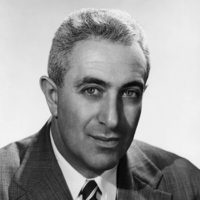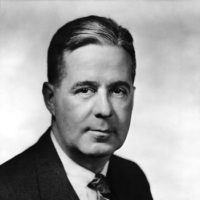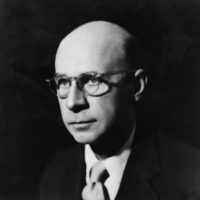
Irving J. Selikoff
Bristol-Meyers Squibb- Squibb Institute for Medical Research

Walsh McDermott
Hoffman – La Roche Research Laboratories

Edward Robitzek
Bristol-Meyers Squibb- Squibb Institute for Medical Research

Carl Muschenheim
Hoffman – La Roche Research Laboratories
For establishing the efficacy of isoniazid drugs in the treatment of tuberculosis.
The discovery of the action of derivatives of isonicotinic acid against the growth of the tubercle bacillus was announced in the spring of 1952. The new day of treatment of tuberculosis had been heralded previously by the demonstration of the restraining effects of the sulfones and sulfonamides and was soon brightened by the discovery of even more active therapeutic agents. But the hydrazides of isonicotinic acid were soon found to surpass any other known substance in the degree of their specificity against the bacillus, their power to diminish its pathogenicity in experimental animals and their easy diffusibility through healthy and diseased tissues.
The shortcomings of some of these drugs (the thiosemicarbazones) because of their toxicity prompted the research staffs of two great manufacturers of drugs to search for other compounds of the same class. Isonicotinic acid hydrazide, selected as a starter of numerous syntheses, was found to be more promising than any other tested. Its strong antagonism toward turberculosis in animals, in some respects unique, was promptly demonstrated, and simultaneously its toxicity was shown to be relatively low.
Two groups of physicians followed immediately with clinical trials among tuberculosis patients. In a remarkably short period of time this cooperative endeavor established the great efficacy of isoniazid, its superiority over all other agents for the treatment of tuberculosis meningitis and generalized miliary tuberculosis and its suitability for prolonged therapy.
The discovery, now considered universally to be of the first order, has influenced the principles of treatment and control of tuberculosis profoundly. This contribution of the investigators distinguishes them as true scientists and humanitarians.
